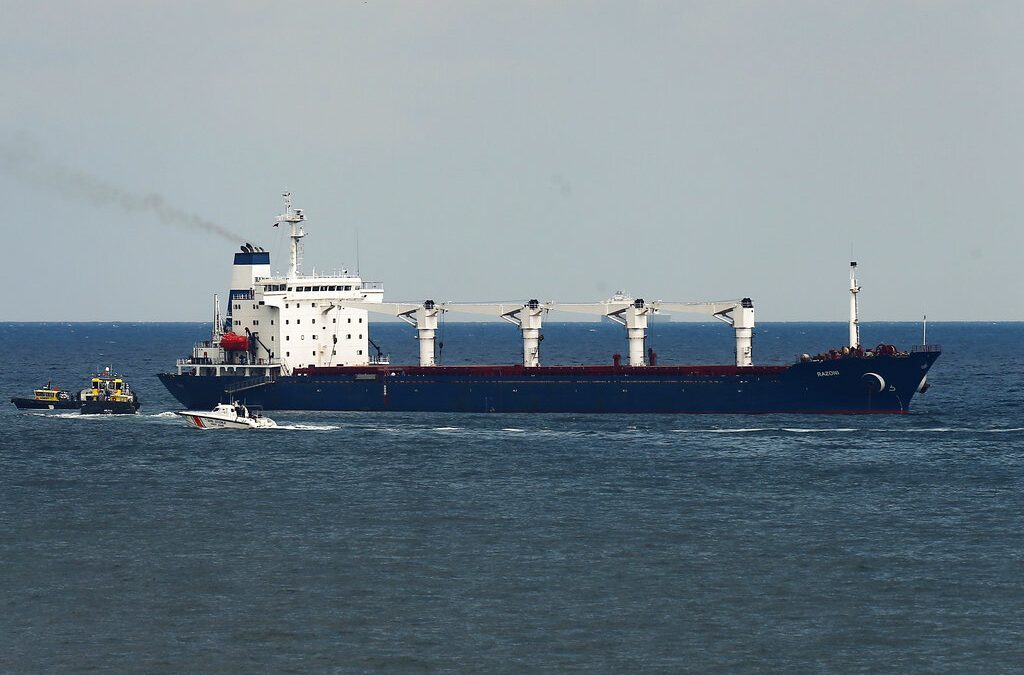United States exports of LNG to Europe are set to jump in the coming weeks after the price spread between domestic natural gas and Europe’s main gas pricing hub hit one-year highs.
The price differential between U.S. Henry Hub natural gas futures NGc1 – the U.S. gas price benchmark – and the TTF gas trading facility in The Netherlands has widened by over 30% from the current 2024 average for delivery during the coming winter.
That’s signalling bumper profit potential for U.S. exporters of liquefied natural gas (LNG), who are increasing the volumes of gas flows to export facilities.
The increased LNG shipments to Europe will trigger a revenue rise for the largest U.S. LNG exporters, including Cheniere LNG, TotalEnergies TTEF.PA and Freeport LNG.
But higher demand for natural gas at LNG export terminals also raises the potential for a further climb in U.S. domestic gas prices, which are already at their highest since January.
That means that while U.S. LNG exporters have a strong opportunity to boost revenues, they also face the risk of reviving inflation and triggering a backlash against the export of energy products needed for power generation at home.
EUROPE BOUND
U.S. natural gas prices are currently around 80% lower than TTF prices, giving LNG exporters the opportunity to profit from the wide price differential between the gas grades.
So far in 2024, Henry Hub gas futures have averaged around $8 per million British thermal units (MMBtu) less than TTF gas futures, according to LSEG.
That price differential in favour of U.S. suppliers has encouraged sustained U.S. LNG exports to Europe, which have totalled around 82 million cubic meters over the first 10 months of the year, according to Kpler.
However, an even wider price spread is projected through the coming winter which looks set to spur even larger shipments.
Forward markets from November through the end of March 2025 indicate that the Henry Hub-TTF price spread is roughly $11 per MMBtu. That’s a $3 increase over the 2024 average so far, and a strong incentive for U.S. exporters to boost shipments further.
Europe has bought over two-thirdsof U.S. LNG shipments since 2022, when Russia’s invasion of Ukraine triggered cuts to Russian gas pipeline flows to Europe and sparked a scramble by European gas buyers to plug supply gaps with LNG.
And U.S. LNG exporters are keen to maintain market share in Europe as the cost of serving European buyers is far lower compared to customers in Asia, due to far longer journey times to buyers in Japan, China and South Korea.
The roughly 12-day trip from Cove Point LNG terminal in Maryland to Wilhelmshaven in Germany – a major European LNG import hub – is a third of the time of the trip to Guangdong in China, the world’s largest LNG buyer.
That relatively quick turnaround time means U.S. exporters will prefer to prioritise Europe over other destinations over the coming months.
However, Europe’s relatively strong gas prices means the continent is also prized by other sellers.
DIVERSIONS & CONGESTION?
LSEG forward price data indicates that TTF prices are around $2 per MMBtu higher than LNG prices based off Brent-indexed LNG contracts, which utilize the price of Brent crude oil in formulating LNG prices.
That price premium in Europe has already triggered traders to divert some cargoes from other markets, with the aim of capturing the higher prices available in Europe compared to other regions.
Any sustained price strength in Europe relative to other markets will spur traders with unsold cargoes from Qatar and elsewhere to focus on finding buyers in Europe.
That in turn will provide stiff competition for U.S. exporters, even if U.S. sail times to Europe are roughly a week shorter compared to shipments from Qatar.
However, more competition for buyers in Europe will in time serve to depress European prices, which should then erode the economics of sending LNG to Europe from distant origins.
That bodes well for U.S. exporters, as long as domestic gas prices remain vastly cheaper than gas supplies in other LNG export hubs.
The main risk for U.S. LNG exporters is that domestic gas prices quickly push higher, which could be triggered by the enduring strong gas demand at LNG export terminals alongside a sharp increase in domestic gas use for heating.
Such a scenario could spark backlash among U.S. power consumers, who are already reeling from high inflation and could push for measures that slow the flow of U.S. natural gas to overseas consumers.
That means U.S. LNG sellers may be need to be content to exploit the current open sales window to Europe, and then dial back sales volumes if domestic prices gather more upside momentum.
Source: Reuters (Reporting by Gavin Maguire; Editing by Sonali Paul)






